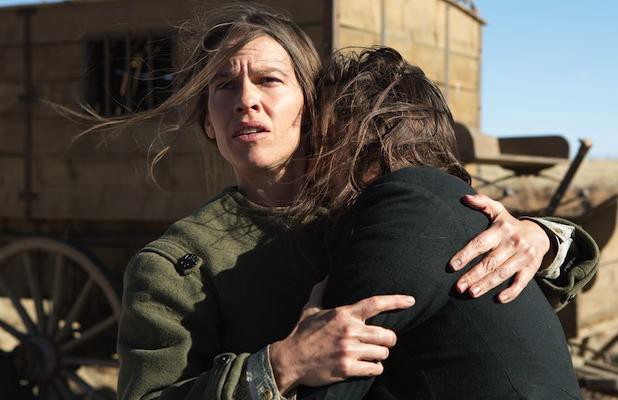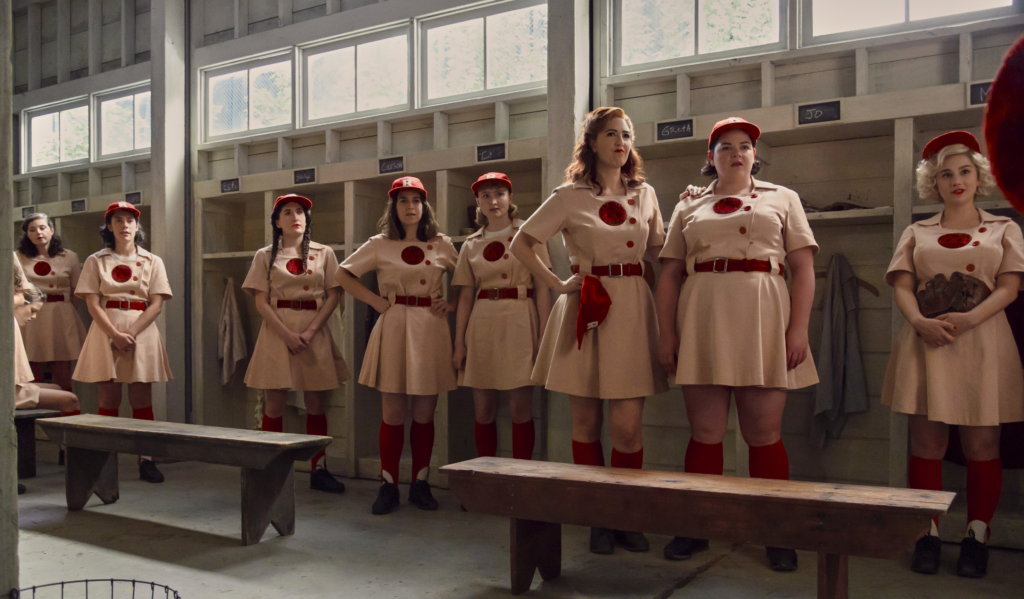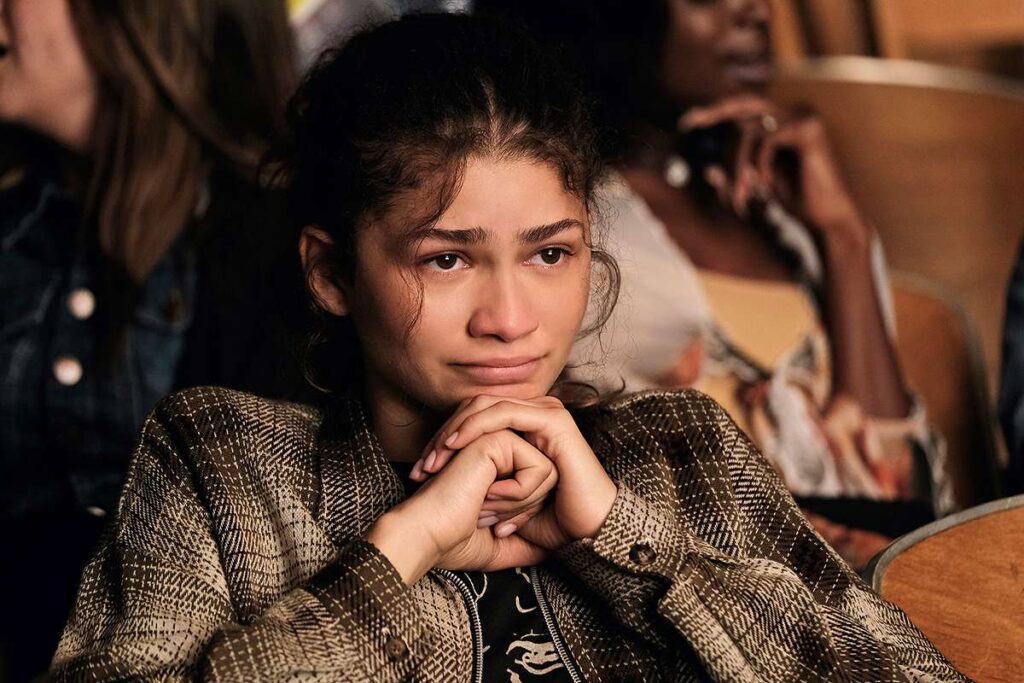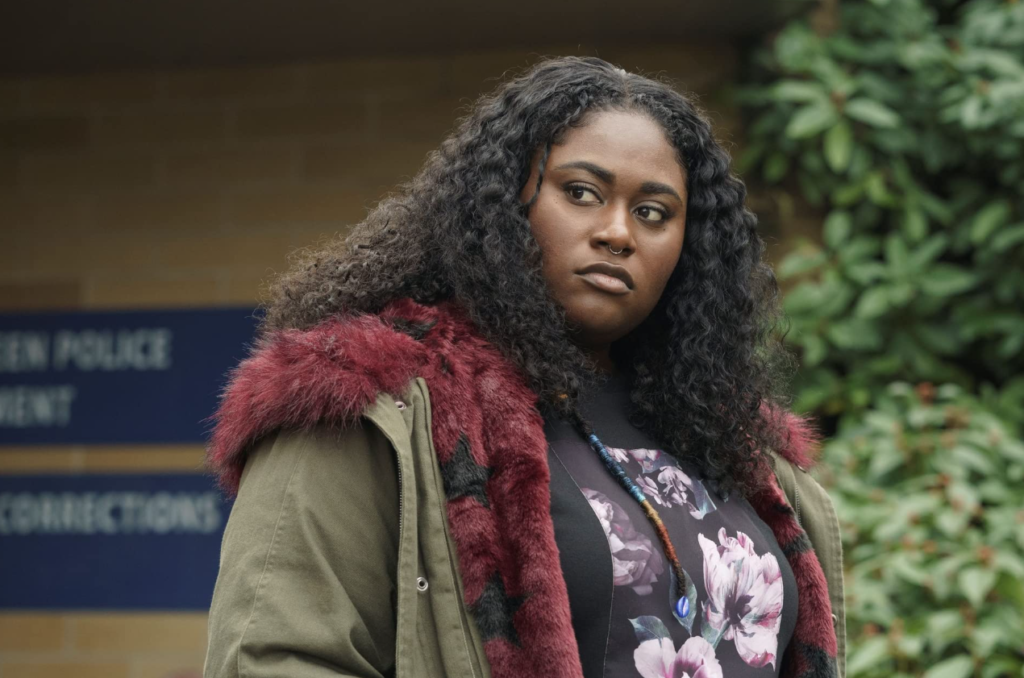You can have your SAGs and Golden Globes. But the ultimate acting prize in the movie biz has been and remains an Oscar for a lead performance.
And if owning one is impressive, having two on your shelf is even greater validation that you rank among the all-time best.
Hilary Swank, who returns to theaters in The Homesman on November 14, is part of an exclusive group of women who have won two lead-actress Academy Awards. She has earned the right to stand alongside Bette Davis, Luise Rainer, Olivia De Havilland, Vivien Leigh, Elizabeth Taylor, Jane Fonda, Glenda Jackson, Sally Field, and Jodie Foster.
That’s quite the collection of legendary ladies.
There are those who top them, however. Meryl Streep and Ingrid Bergman — those showoffs — have won two lead trophies, plus a supporting Oscar for extra measure. And, in a league of her own, stands Katharine Hepburn with four lead wins — the most for any actress since Hollywood’s annual horse race took off in 1929.
But 40-year-old Swank’s can claim another achievement as the only living actress under the age of 50 to have a pair of lead-actress Oscars under her belt — both of which were won by the time she turned 30. Foster at 51 is the second youngest.
It’s a bit puzzling, then, why Swank hasn’t had better opportunities to show off her gifts.
When she is perfectly cast, if feels as if no one else but Swank could do the part justice. That was certainly the case with the titles that led to her victories, 1999’s Boys Don’t Cry and 2004’s Million Dollar Baby. But save for a few other films, such as 2002’s Insomnia, 2007’s Freedom Writers, and 2010’s Conviction, her talents have been criminally underserved by the film industry.
Basically, Swank — even when starting out in her twenties in films like 1994’s The Next Karate Kid — has never fit the mold of a starlet who starts off her career as the hero’s girlfriend or the best pal of the female star. Not this scrappy lass who grew up in a trailer park, never graduated from high school, and lived in a car with her divorced mom when she first arrived in Los Angeles.
Instead, she soared as the young trans man Brandon Teena in Kimberly Peirce’s Boys Don’t Cry. She was a hard-luck waitress turned boxer in Clint Eastwood’s Million Dollar Baby. These were dark movies enlivened by a gritty energy and packed with emotion amid tragic circumstances. And they fit Swank like a glove — or, in one case, a boxing glove.
As stunning as she can be on a red carpet, Swank projects a strong presence on screen that is wasted on a romantic melodrama like 2007’s P.S. I Love You or a lush period piece like 2001’s The Affair of the Necklace. Not that she was better served by being an astronaut saving the world in the 2003 sci-fi thriller The Core.
As for last month’s You’re Not You, which sank out of view after grossing less than $1 million at the box office, critics had some kind words for Swank’s performance as a classical pianist suffering from ALS, but skewered the film itself. A Variety review said of its headliner: “Unfortunately, the film calls on her to play a disease more often than a character, and this well-intentioned weepie never quite rises far enough above its movie-of-the week architecture.”
What is the problem? “Some might say she isn’t versatile,” says film historian and Wesleyan University professor Jeanine Basinger. “But, judging by those standards, Joan Crawford isn’t versatile. Katharine Hepburn isn’t versatile. Hilary Swank possesses a powerful look not unlike that found in great movie stars of the past. They weren’t defined by beauty alone. In the old days, studios made a lot of movies that accommodated a female presence like that.”
Back when actors were attached to a certain studio, they would often get parts that were custom-fit to capitalize on their unique abilities and personae. That is rarely the case anymore. It is harder for actresses, who have fewer ample roles to choose from in general, especially as they grow older. “Swank takes up a lot of space inside the frame,” Basinger says. “That calls for a specialized story. She can’t be a schoolteacher at a kindergarten who falls for a quirky guy. She needs a big role.”
But even a big role requires substance. Amelia was perceived to be a chance to let Swank truly fly in a part that she seemed destined to play. Instead, the 2009 Mira Nair-directed biopic, which focused on female aviation pioneer Amelia Earhart, whose plane mysteriously disappeared over the Pacific Ocean in 1937, was just another squandered opportunity.
The reviews were particularly harsh regarding Swank. Here is how Ric Gillespie, author of Finding Amelia, reacted: “Swank, under Nair’s direction, accomplishes the amazing feat of making one of the most complex, passionate, ferociously ambitious, and successful women of the 20th century seem shallow, weepy, and rather dull.”
New York magazine critic David Edelstein hit on something when he observed of the actress, “In her best performances, Swank has a gift for pulling you into her characters’ heads, for making their dreams almost tactile. But she needs a director who can give her something real to play off.”
What she requires, Basinger suggests, is a seasoned filmmaker like Clint Eastwood to take her under his wing. “There was an appreciation and awareness of Swank’s strengths in Million Dollar Baby. It was crafted with a sense of who she is.”
That seems to be the case again with The Homesman, a female-driven Western directed by and co-starring Tommy Lee Jones. Even though he has directed only one other feature — 2005’s well-received The Three Burials of Melquiades Estrada — Jones is enough of a pro after 40-plus years in the acting saddle to be able to pick a star performer who is going to take his movie to the next level.
He had this to say about hiring Swank as Mary Bee Cuddy, an upstanding and independent-minded pioneer woman who nonetheless would like to share her life with a man: “It took me as long as five seconds for me to understand she’s perfect for the role. Physically, mentally, emotionally…. She’s not afraid of a horse or a mule. I mean, I’ve been looking for a long time [and finding her] was an enormous relief.”
The movie itself, in which Swank’s Cuddy and Jones’ ornery scoundrel Briggs make for an odd pairing as they escort three mentally ill women from Nebraska to Iowa through treacherous terrain, received mixed notices after its premiere at Cannes. Some have found that a sudden turn of events late in the proceedings undercuts the pro-female sentiment that is on display early on. But Swank, whose courageous character is unkindly described as “plain as an old tin pail,” has been singled out for praise. As a critic for The Telegraph observed, “This is Swank’s meatiest role in a long time, and she plays it like she knows it.”
The question is, will she get a third chance to go for the gold? So far, eight out of the 24 experts enlisted by Gold Derby, the awards prediction site, think Swank will be one of the five nominated for Best Actress. It also doesn’t hurt that, once again, there is a sense of her character engaging in traditionally male activities such as plowing fields, tending to mules, employing firearms, and guiding a rickety, horse-drawn wagon across the barren plains.
That the menfolk in the town, who back away from volunteering for the cross-country mission, consider Cuddy to be “bossy” is their way of saying that they are rightly intimidated by her.
And, unfortunately, many an accomplished contemporary woman knows what it is like to have certain b-words tossed in their direction.
But even if she isn’t in the running this year, Basinger believes Swank is too intelligent and unique not to get other chances to shine in the future. After all, “You can’t feel too bad for a two-time Oscar winner.”







